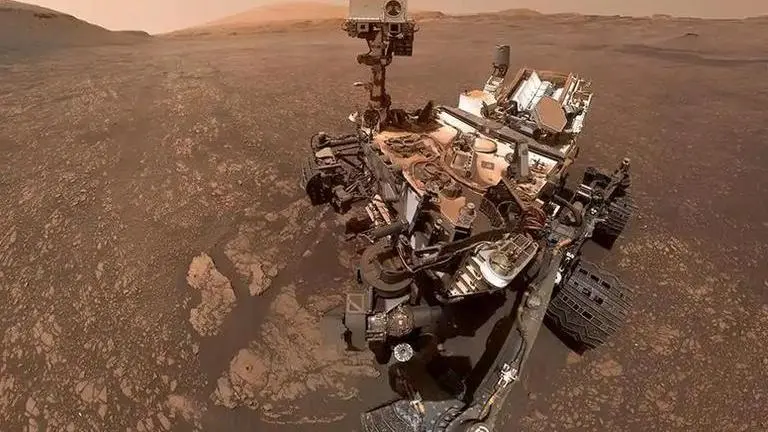Updated 8 July 2020 at 16:31 IST
Curiosity Mars rover begins summer road trip in search of ancient microbial life
NASA's Curiosity Mars rover has started a road trip that will continue through the summer across roughly a mile (1.6 kilometers) of martian terrain.
- Science News
- 2 min read

NASA's Curiosity Mars rover has started a road trip that will continue through the summer across roughly a mile (1.6 kilometers) of terrain. By trip's end, the rover will be able to ascend to the next section of the 3-mile-tall Martian (5-kilometer-tall) mountain it's been exploring since 2014, searching for conditions that may have supported ancient microbial life.
Located on the floor of Gale Crater, Mount Sharp is composed of sedimentary layers that built up over time. Each layer helps tell the story about how Mars changed from being more Earth-like – with lakes, streams, and a thicker atmosphere – to the nearly-airless, freezing desert it is today.
The rover's next stop is a part of the mountain called the "sulfate-bearing unit." Sulfates, like gypsum and Epsom salts, usually form around water as it evaporates, and they are yet another clue to how the climate and prospects for life changed nearly 3 billion years ago.
Advertisement
But between the rover and those sulfates lies a vast patch of sand that Curiosity must drive around to avoid getting stuck. Hence the mile-long road trip: Rover planners, who are commanding Curiosity from home rather than their offices at NASA's Jet Propulsion Laboratory in Southern California, expect to reach the area in early fall, although the science team could decide to stop along the way to drill a sample or study any surprises they come across.
Advertisement
Depending on the landscape, Curiosity's top speeds range between 82 and 328 feet (25 and100 meters) per hour. Some of this summer road trip will be completed using the rover's automated driving abilities, which enable Curiosity to find the safest paths forward on its own. Rover planners allow for this when they lack terrain imagery.
"Curiosity can't drive entirely without humans in the loop," said Matt Gildner, lead rover driver at JPL. "But it does have the ability to make simple decisions along the way to avoid large rocks or risky terrain. It stops if it doesn't have enough information to complete a drive on its own."
"Curiosity was designed to go beyond Opportunity's search for the history of water," said Abigail Fraeman of JPL, who has served as deputy project scientist for both missions. "We're uncovering an ancient world that offered life a foothold for longer than we realized."
(Photo: mars.nasa.gov) (With inputs from ANI)
Published By : Shubhayan Bhattacharya
Published On: 8 July 2020 at 16:31 IST
